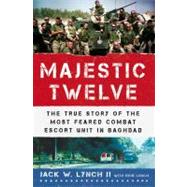
| Departure and Forty-Seven Dead | p. 1 |
| Kirkush and the Convoys | p. 21 |
| The Team Forms | p. 34 |
| Training | p. 52 |
| The Fight | p. 64 |
| Vorgang | p. 74 |
| Deadly April | p. 77 |
| Gunfight | p. 84 |
| Our Own People Want Us Dead | p. 114 |
| KBR Protects Its Profits | p. 151 |
| Heroes, Villains, and Rockets With Your Fruit Loops | p. 199 |
| Where Is the Enemy? | p. 208 |
| The War at Home | p. 232 |
| Hummers for a Week | p. 241 |
| Deboda and Friends | p. 251 |
| Bitter End | p. 277 |
| Going Home | p. 283 |
| Glossary | p. 311 |
| Index | p. 315 |
| Table of Contents provided by Ingram. All Rights Reserved. |
The New copy of this book will include any supplemental materials advertised. Please check the title of the book to determine if it should include any access cards, study guides, lab manuals, CDs, etc.
The Used, Rental and eBook copies of this book are not guaranteed to include any supplemental materials. Typically, only the book itself is included. This is true even if the title states it includes any access cards, study guides, lab manuals, CDs, etc.